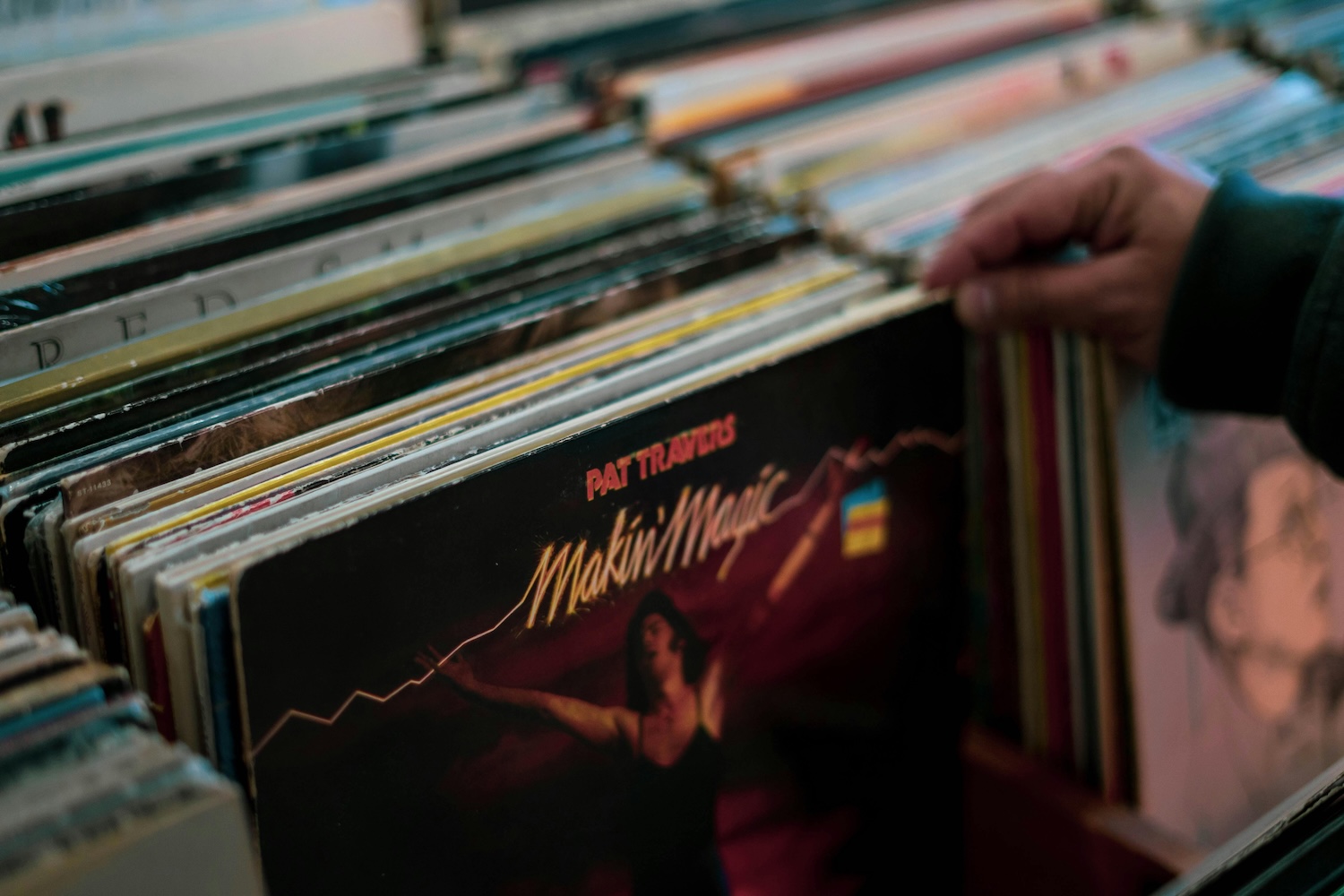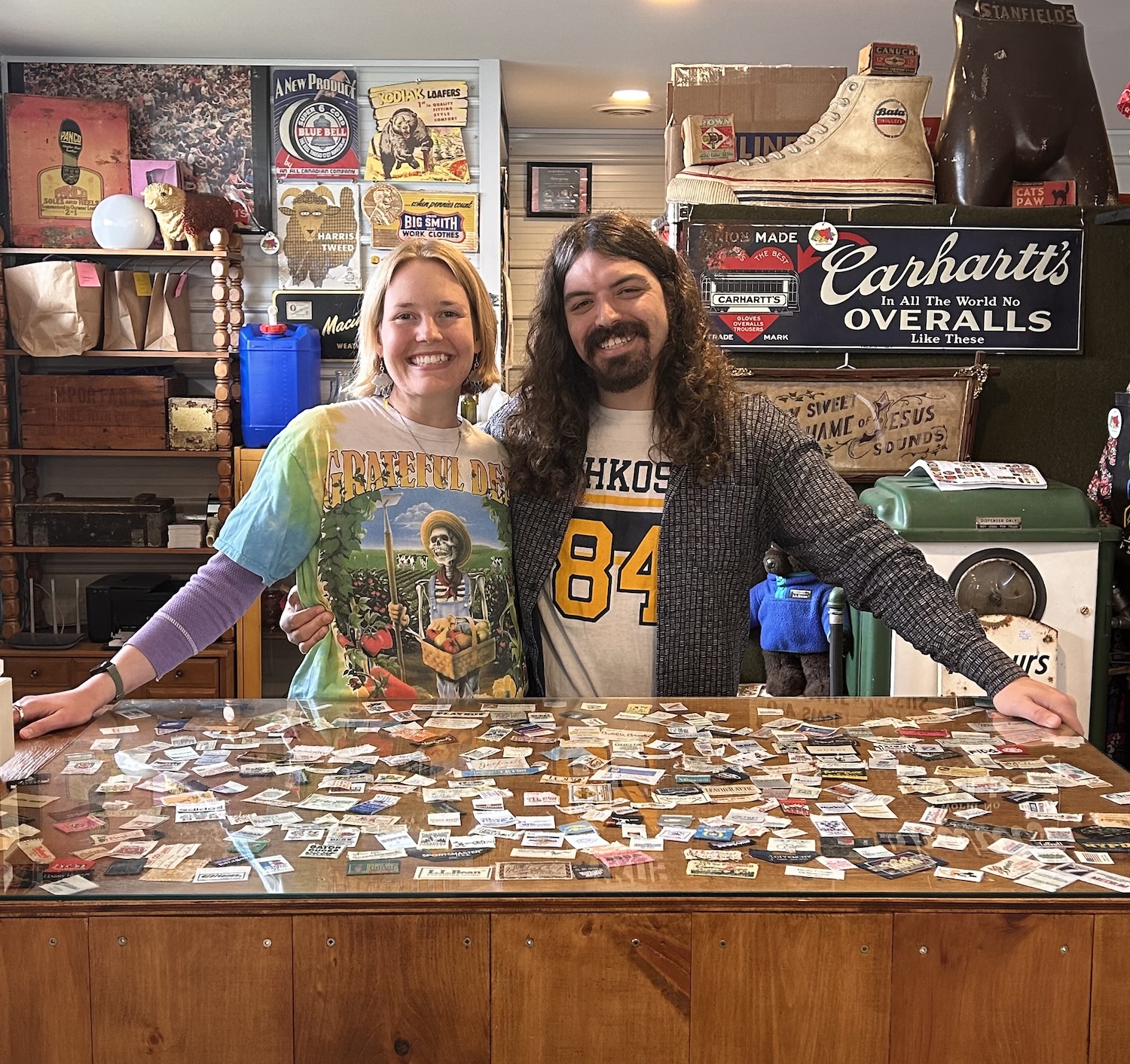
Can antiques look modern? We ask an interiors expert about how to decorate with vintage
We sit down for a Q&A with Katherine Sorrell, author of new coffee-table book Everyday Antiques: Inviting Homes Where Old Meets New to discuss how to incorporate vintage and antique pieces into a modern abode
You ever walk into your effortlessly cool friend’s place, see a new-to-you piece of furniture and ask, filled with wonder, “Where did you get that?”
Author Katherine Sorrell is not only sharing the where, but the how of vintage — sourcing it, styling it, mixing it with your existing pieces and using it to become that cool friend — in her new book, Everyday Antiques: Inviting Homes Where Old Meets New (Ryland Peters & Small, 2024).
Released Sept. 10, Everyday Antiques is your real-life Pinterest board: 192 pages, filled with sumptuous photography of rooms dressed head to toe in vintage, antiques and contemporary pieces, flanked by thoughtful prose and packed with styling tips.
Flip through spread upon spread of styles that suit every taste, from antiques-laden farmhouse living rooms to romantic French Provincial bedrooms to urban industrial kitchens. Each chapter covers a different room of the home and contains a style guide of tips on how to best decorate your space.

Katherine, a longtime interiors writer and magazine editor in the U.K., wants to ensure shoppers can find their own everyday antiques and included a list of major antique markets to visit in the U.S. and the U.K. as a starting point.
For the novice treasure hunter, decorating with vintage and antiques requires some experimentation to align with your personal style. But Katherine provides so much advice in the book that anyone can use it as a formula to score some winning pieces for their home.
“Even in the most modern and boxy of rooms, one or two old pieces will tone down hard lines, banish any sense of sterility and provide a mood of easy-going comfort,” she writes on p. 12.
And for those most seasoned of antiquers, the featured rooms themselves, collected from the publishing house’s massive library, provide eye candy enough.
Here, Katherine along with Annabel Morgan, senior commissioning editor at Ryland Peters & Small, answer some of The Vintage Seeker’s questions about how to decorate with antiques whether you’re on a budget or are ready to invest in a quality piece.
Your career has been in lifestyle journalism with a decorating focus.
What in particular inspired you to research and write Everyday Antiques?
Katherine Sorrell: My motivation was to show people — especially those who perhaps don’t have much experience with antiques or vintage pieces — how it’s possible to incorporate vintage and antique furnishings and accessories into their homes, of whatever size or style.
I wanted to convey the idea that antiques aren’t some distant, unachievable thing that you can only have if you’re very rich and live in a grand home, and that they have fabulous character, that there’s an enormous variety to choose from — from ancient to mid-century modern — and that they’re a “green” choice, too.
I also wanted to show how ingenuity and lateral thinking can be just as good as a big budget, whether it’s using a mirrored armoire as a drinks cabinet or turning an old linen sheet into a shower curtain.

How did you get interested in vintage and antiques?
KS: I remember, as a child, being on holiday with my father and stepmother, and them buying a small Victorian side table, made from painted papier maché, from a local antiques shop.
It was round, black and with intricate hand painting in vivid colours. I was fascinated by it and, thinking back, that’s probably what kick-started my interest.
It is refreshing to see vintage and antiques treated so beautifully, with full-page photography and a distinctive editorial style.
Can you talk a bit about the making of the book itself?
Annabel Morgan: We wanted to create a book that felt accessible and demystified the world of antiques and vintage for readers who might not have a lot of knowledge or experience of buying secondhand. They might want to shop vintage because it’s more sustainable, or on trend, or affordable.
Whatever the reason, the book aims to show how to incorporate antique and vintage pieces into a home with ease and style. It’s not about collecting rare items or having a huge budget – instead, it encourages readers to source vintage and antique pieces that are good looking, practical and (hopefully) spark joy every day.

Your book does an incredible job of showing how vintage and antiques can be incorporated into a range of styles, from the rustic farmhouse to the ultra-modern.
Why do you think it’s important that people see how these items can be used in situ?
KS: That’s so kind! Thank you. I always find it really helpful to look at images that help me visualise how to put rooms together.
Showing how older pieces of all types can be incorporated into different sizes and styles of home busts any preconceptions about antiques being dull and dusty, or that you can only use them in certain situations — like in a grand old house, for example.
I’d love to encourage people to mix things up, be bold and do what makes them feel comfortable and happy, without spending a fortune. Hopefully, showing a wide range of different room sets helps stir readers’ imaginations and gives them a little more confidence to experiment.
What do you think is the biggest misconception about antiques and vintage from consumers who don’t already shop for it? What do you hope your book does to change that?
KS: I suspect that some people might think of antiques as bulky pieces of brown furniture that are too large for modern homes, and/or that they’re always really expensive.
My hope is that the book will show the wide variety of antique and vintage furnishings and accessories available, at all price points. They can be functional as well as decorative, small or large, and not only furniture but also lighting, textiles, glassware, ceramics, mirrors and works of art.
Continued below
Find vintage and antique shops near you
Browse our directoryContinued from above
I also hope it shows that antiques can be used in unexpected ways. You can make a difference to a room with just one small piece — it’s a kind of layering, and introducing something a little older to an otherwise modern room really does add character in terms of interesting colour, texture, material, shape, size, style and so on.
I’d also love people to get on board with the idea of antiques being “green.” Buying antiques really is the ultimate form of recycling, and because they’re often made from high-quality materials using time-honoured, skilled craftsmanship, you’re getting something that’s beautiful, durable and excellent value for money.
What’s your favourite spread in the book?
KS: I genuinely can’t pick a favourite! To mention a few… I love the vintage chapel chairs around the dining table on p. 46, the very simple bedroom with the dramatically dark armoire on p. 80, the lace-trimmed linen sheet used as a shower curtain on p. 121 and, on p. 134, the fabulous contrast of the 1966 Stendig wall calendar hung above an old apothecary cabinet.

Where are your favourite places to source vintage and antiques on a budget as someone who’s spent their career writing about decor?
KS: I think it’s just a case of keeping your eyes open wherever you go, as you never know when you might come across something you love. It could be a market, an auction, a local antiques shop or even browsing online.
For those with small spaces, do you have any go-to ideas on incorporating vintage and antiques?
KS: There are plenty of antique and vintage items that will work in smaller rooms, from rugs to wall lamps to works of art, none of which take up any extra space.
How about a beautiful mirror? Always useful, this also adds wonderful character and helps bounce light around the room.
In general, it can help to choose slimline pieces raised on legs — when you can see more floor, the room feels bigger.
Perhaps avoid ornate and heavy Victorian pieces (and any very bulky upholstery), in favour of mid-century modern furnishings on splayed legs and with minimal upholstery. Lighting from this period is gorgeous, too.
Your book highlights the many ways we can incorporate vintage and antiques — not only furniture and fun decor pieces but lighting, hardware, bathtubs, etc.
What are some watch-outs shoppers should look for when considering those kinds of items?
KS: Check that any piece you’re buying doesn’t have woodworm or suffer from moths. Electrical safety is paramount. It’s wise to get a qualified electrician to check that your piece complies with current regulations.
Anything to do with plumbing may — depending on age and provenance – be an issue as metric/imperial sizes will not easily join together (and plumbers are not always keen to deal with vintage pieces).
Ask whether old taps, radiators and similar have been restored and tested. Check for chips, stains and other flaws in bath and basin enamel. And — top tip — think very carefully before trying to install a heavy cast-iron bath on an upper floor!

Vintage and antique shops are fun places to be for many of us, but can be overwhelming for the average shopper or home decor enthusiast.
What are some of your tips on where to start? How do you suggest people focus their efforts?
KS: These days you can browse the world’s antiques from your armchair, so I would suggest getting your eye in with plenty of research online. This will give you a good idea of what’s available and at what prices. A vetted site such as 1stDibs gives you confidence that you’re buying genuine pieces from reputable dealers.
That said, there’s absolutely no substitute for seeing things in person — you can inspect every nook and cranny and ask lots of questions.
Try a large antiques market where there’s loads on offer in one place. You can wander from stall to stall and see what catches your eye. And don’t be afraid to talk to the vendors. They will welcome polite inquiries and be happy to engage in conversation.
Always take a tape measure, and if you’re looking for a piece to fit into a specific space, bring along its dimensions, too.

What has been your all-time best, holy-grail vintage or antiques find for your own home?
KS: I’m not sure it’s a holy-grail find, but I’m very fond of my large, light-up letter “O,” made from black, white and pink acrylic, which I think dates back to the 1960s.
Once part of the sign for our town’s (now closed) bingo hall, it was acquired and wired as a standalone lamp by a local antiques shop. It’s now found a home as a cool accessory in my son’s bedroom (his name begins with O, so it’s very appropriate!).
Find Everyday Antiques: Inviting Homes Where Old Meets New by Katherine Sorrell at a local bookseller near you.
Thank you for valuing our work!
Support our work to see this page.
You’ve got a good eye, but this gem is only available for members. Register for a plan or upgrade your current one to peek behind this vintage curtain, or log in below.















